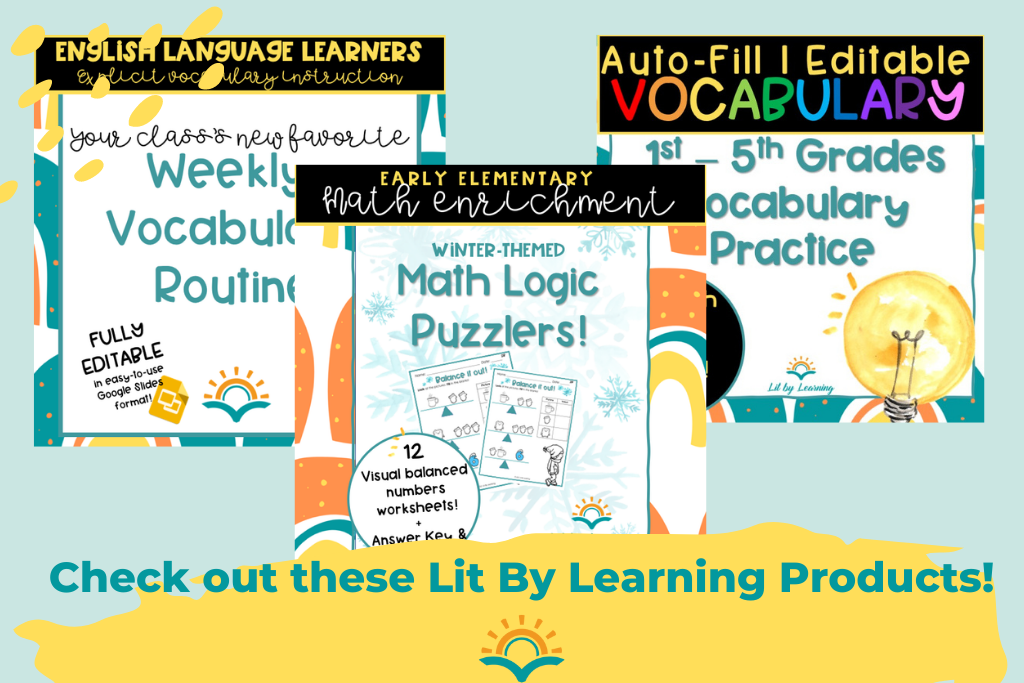Primary math teachers: are you looking for strategies for differentiating instruction for your ELL students? I swear I tried to keep it to 7, but couldn’t wait to share these 11 genius differentiation ideas with you! Check them out below!
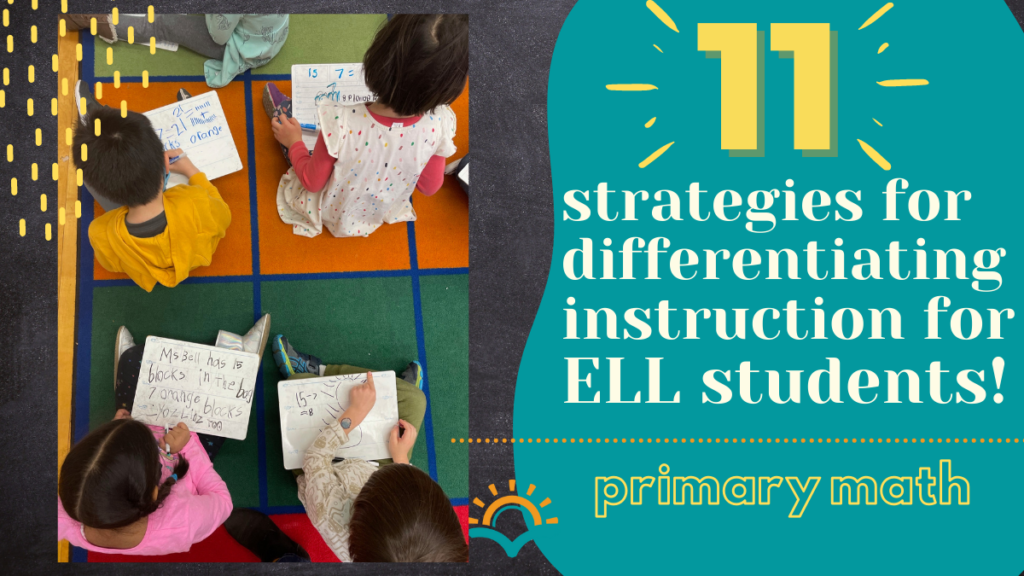
Who are you to share strategies for differentiating instruction for ELL students?!
Who I am
Hello, math teachers! My name is Kate and I’ve been teaching in bilingual/ELL Chicago Public School Classrooms for 12+ years. I have taught math to English Language Learning students in Pre-K, 1st grade, 2nd grade, and 3rd grade using a variety of curricula. I’ve also had the enormous privilege of collaborating on several Lesson Study teams. I even got to teach math to my 2nd graders in front of a live audience of 100+ math teachers from around the world (!) Along the way, I’ve collected some amazing teacher differentiation strategies for ELL students and I’m SO excited to share them with you today!
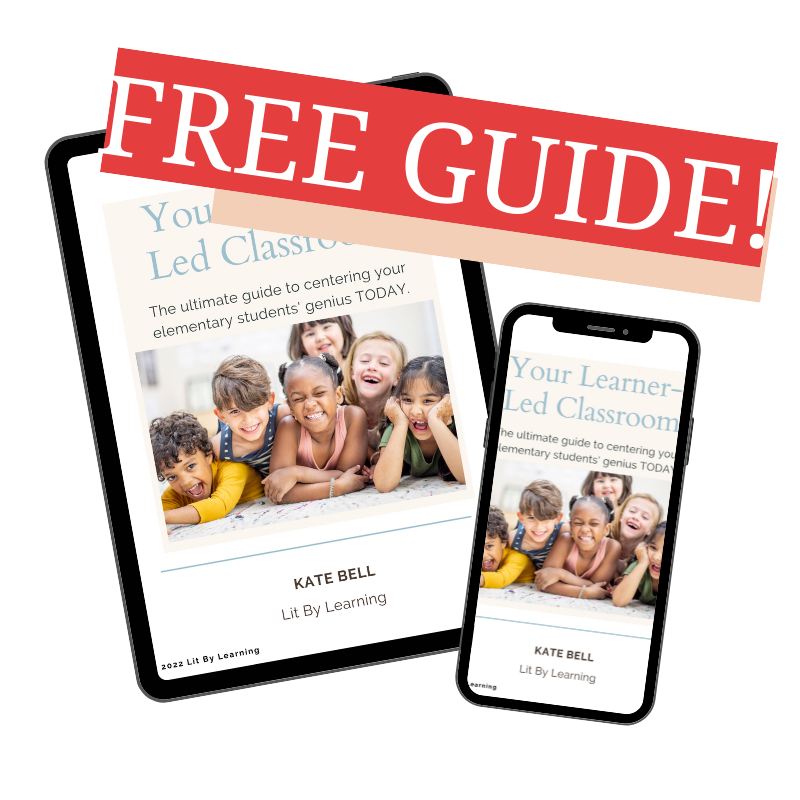
Math in my classroom
I currently teach 1st grade math in a problem-based, flipped classroom style. I have 8 students from a variety of ethnolinguistic backgrounds who are enrolled in our school’s ELL program. Our typical daily math block looks something like this:
- Math Talk: We talk about math as a whole group!
- Grapple problem: Students have 5-7 minutes to independently work on a problem that uses the day’s objective and is just within their reach. I encourage students to use whatever strategy they want to solve the probem.
- Mini-lesson: I aggragate the ideas students shared into a presentation of the day’s objective.
- Practice: We do centers or an activity to practice the concept of the day!
- Reflection/self-assessment: Students circle back to the stated objective and let me know how it went!
I LOVE teaching math like this! It is so student-centered and really builds students’ mathematical confidence! OK, enough about me – on to the differentiation strategies!
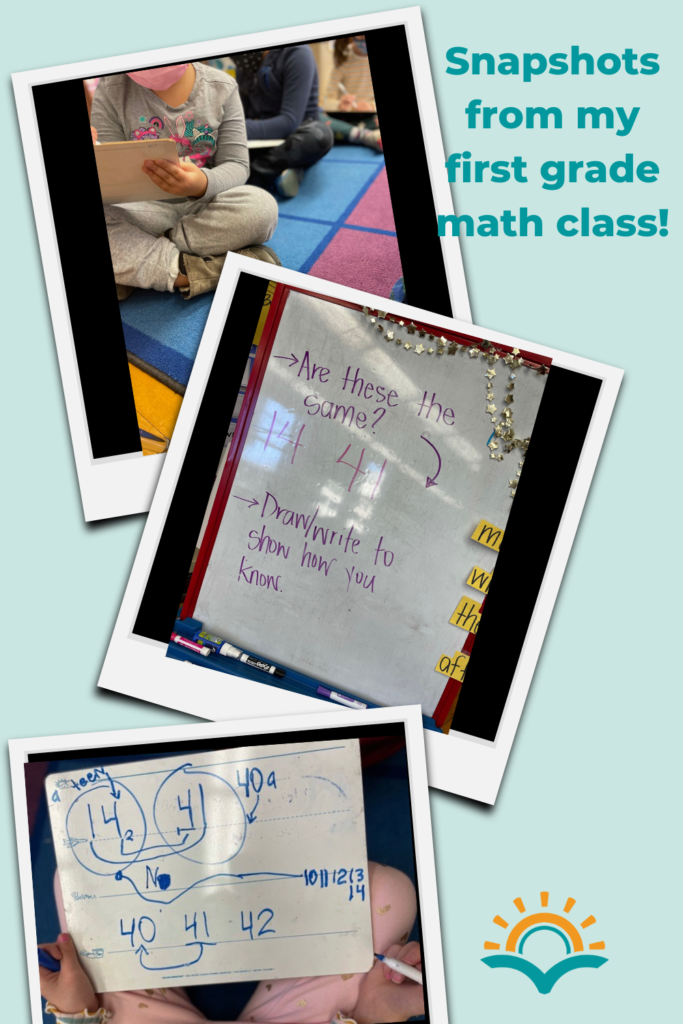
Overview: Types of strategies for differentiating instruction
There are 4 main ways to differentiate instruction in math class and beyond. They are:
- Content: What you are teaching. This isn’t as flexible in math class because at the end of the day, you need to teach the standards: the math IS your content. That said there are still ways to make it much more ELL-friendly!
- Process: How you teach it. This is where you have a TON of room to play and differentiate for your English language learning students! Read below to check out some incredibly simple ways to make how you teach math accessible for ELL students.
- Product: How students are asked to demonstrate their learning. I know, you already use a math curriculum that likely has included resources. That said, incorporating language supports on worksheets and quizzes/tests is an integral way of true differentiation for English language learning students.
- Environment: Where the students are learning: The potential here is endless! Read on to find out my top tips for ensuring that your classroom is ELL friendly in math and beyond!
Those are the main categories for general classroom differentiation strategies. In the ELL world, there are 3 main types of differentiation for language support and development. These strategies are shown in the checklist below.
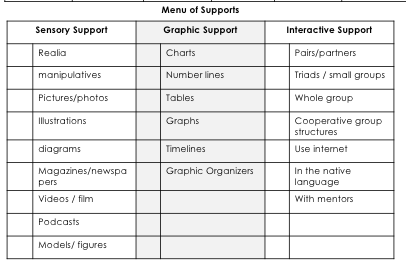
Your 11 genius strategies for differentiating instruction
Strategies for differentiating instruction: Content
- Strategy 1: Tailor your math examples to schema that is familiar and welcoming to your ELL students especially. Not sure what their schema is? Use my culturally responsive family survey to get to know students well from the very first day of school! One schema ALL students have is the classroom around them. This is a general student-centered classroom tip, but use what is familiar and intriguing to students!
Strategies for differentiating instruction: Process
- Strategy 2: Use realia. Fancy word, simple idea – use REAL objects to show math concepts. make it as concrete as possible: if the problem is about adding together bananas, bring some bananas. Dividing Halloween candy into two equal groups? Bring your Jack-o-Lantern pumpkin full of the real goods. Make learning math as hands-on as possible!
- Strategy 3: PLAY! My Early Childhood Education heart is shining brightly here: students NEED time to play with their materials before being expected to use them in mathematical thinking. Using tens and ones blocks? Let students build with, explore, and discover them before they’re expected to do any sort of mathematical modeling. Working on telling time? Give students a good 10-15 minutes to experiment with clocks before teaching! This not only engages their curiosity, but also encourages students to talk about their tools using their own words. “I can match ten of these little blocks on the big one!” “When I move the red hand, it makes the blue one move too!”
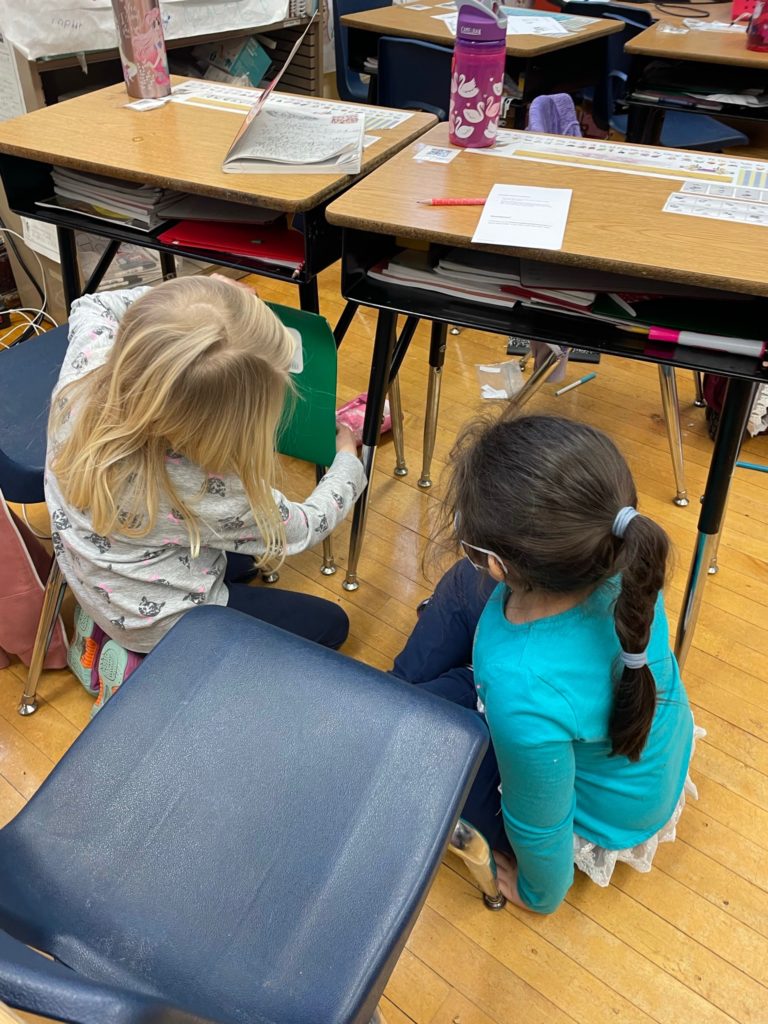
- Strategy 4: Make learning objectives clear! Be explicit about what students will learn that day! This looks a little different for my classroom, which is based on a problem-solving model. Students first have their “grapple problem,” discuss their ideas, and THEN I introduce the learning objective before we go into practice time. I always try to center their thinking into the way I word the objective. For example, “Today, we are going to look more into ______’s idea: we are going to see how we can use the communicative property to flip flop our facts! We will see if it works all the time.” Then, at the end of the lesson, remind students of the objective and ask them to self-evaluate how it went.
- Strategy 5: Provide explicit math vocabulary instruction at the word level! A hot tip: Always use students’ words first. When students are exploring with their math tools or working on their grapple problem, listen closely to the words they’re using to talk about their math. Encourage them to use these confidently when they are presenting their ideas. Later, say something like “mathematicians call your idea (insert math vocabulary term here).” For example: a student says, “we need to see how long it is.” You say: “WOW! Jose said we have to see how long it is – mathematicians call this “measuring!” It is incredibly empowering for students to have their thinking centered in this way! Once you have explicitly introduced the vocabulary, make sure it is posted in a highly visible place. Bonus: Ask students for ideas of a picture to help them remember the word – and place that with it! Check out more explicit vocabulary instruction ideas here!
Always use students’ words first. When students are exploring with their math tools or working on their grapple problem, listen closely to the words they’re using to talk about their math. Encourage them to use these confidently when they are presenting their ideas.
- Strategy 6: Provide and use sentence stems! English language learning students need support at the sentence level too! I have these bilingual sentence frames for cross-curricular student discussions posted all the time, but it’s easy to quickly write math-specific sentence stems on the spot. Here are some examples of stems we use during math:
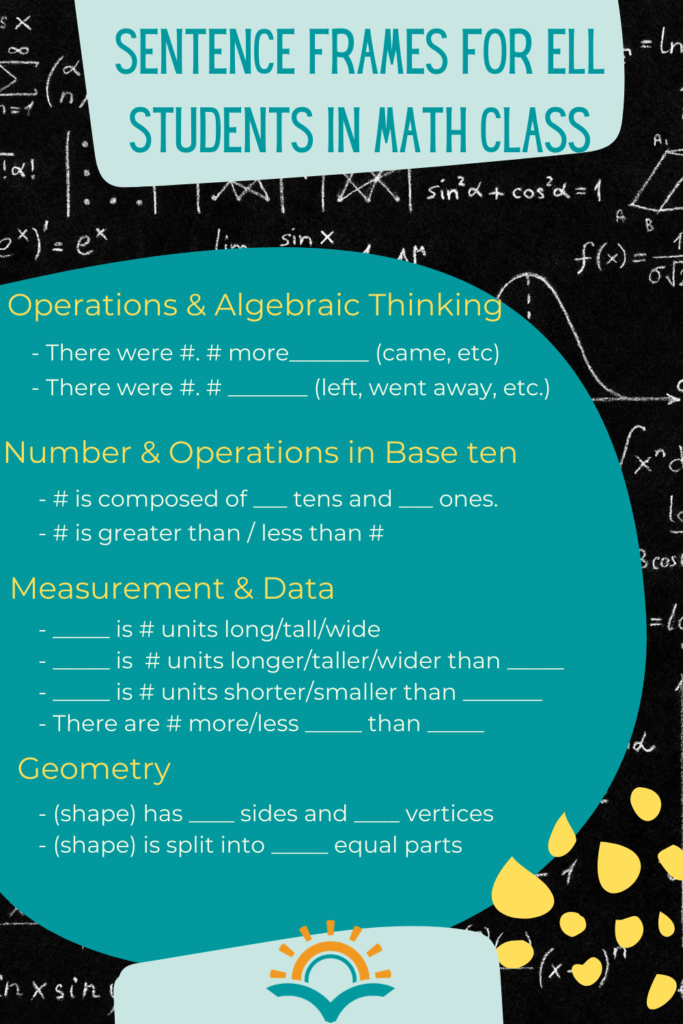
- Strategy 7: Add in some – OK, lots – of drama. Especially when taking on math tasks that require comprehension – hello, story problems! – act. it. out! Take your time and call students up to be the birds flying to and from the tree. Pick volunteers to sort into two equal groups. Narrate the acting and incorporate math vocabulary words: the more students hear the words, the more they will use them!
- Strategy 8: Work in heterogenous groups and pairs as much as possible. As you already know, students learn at least as much from their peers as they do from you (probably more.) Especially early on in an inquiry or unit, match students with peers who have had more experience with English. They should TALK about math as much as possible! As they’re doing this, encourage students to borrow words from one another and remove the stigma behind “copying” someone else. Show how you use others’ words and ideas in your work! Say things like, “We’re here to learn from each other!”
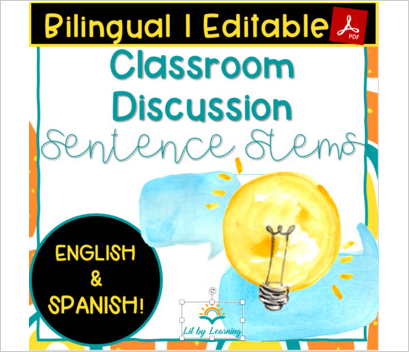
Strategies for differentiating instruction: Product
- Strategy 9: Include language supports on formative and summative assessments! This can be as simple as restating the learning objective in a student-friendly “I can” statement at the top of the resource. It also means providing word banks and sentence stems directly on the resource, especially if students are required to explain their thinking. Check out my easy-to-use editable ELL math worksheet outlines here!
Strategies for differentiating instruction: Environment
- Strategy 10: Make participating in math fail-proof. Right answer? Hooray! Wrong answer? Even better! English math vocabulary? Cool. Native language description? Teach us all! The best mathematicians have learned more from mistakes than from getting things wrong all the time. Esteem “mistakes” in all parts of your day and make sure your norms for math class are crystal clear.
- Strategy 11: Make sure students visual and language tools are really usable! They need to be able to SEE your vocabulary reminders and sentence stems to use them! I like to create anchor charts like the one below to help students recall what we’ve learned so far and the vocabulary we’ve been using. They’re also helpful because I can take them out just for math time each day. Again, feature students’ own words as much as possible!
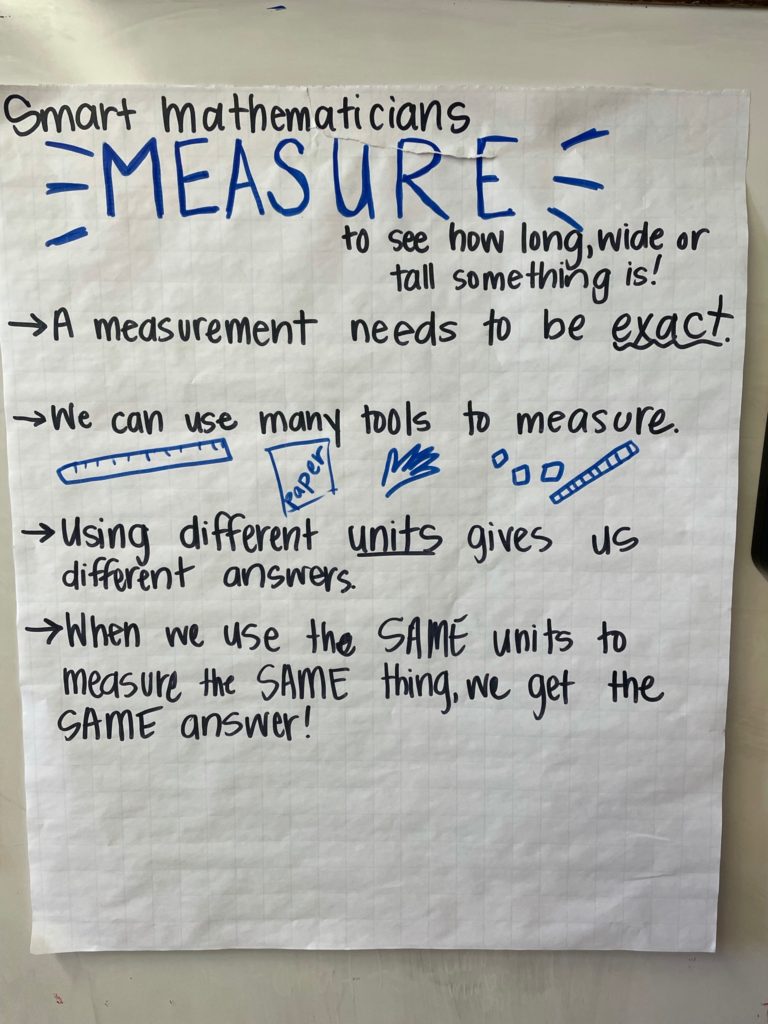
Top secret: These strategies for differentiating instruction for ELL students will actually help everyone
Now it’s time for the BEST news: incorporating all of the 11 strategies for differentiating instruction won’t help just your ELL students. These tips will help ALL math students! That’s right, by proactively supporting your English language learning students, you’ll boost everyone’s engagement with math.
Keep learning!
Check out these related blog posts:
- Lit By Learning: What does a student centered classroom look like?
- Mona Math: Math Vision: How will your students experience math in your class?
- North Dakota Teaching: Middle School Number Talks!
- Scholastic: 10 Ways to Help ELLs Succeed in Math
- Edweek: Thirteen Instructional Strategies for Supporting ELL Newcomers
Here are some Lit By Learning products you may LOVE:
